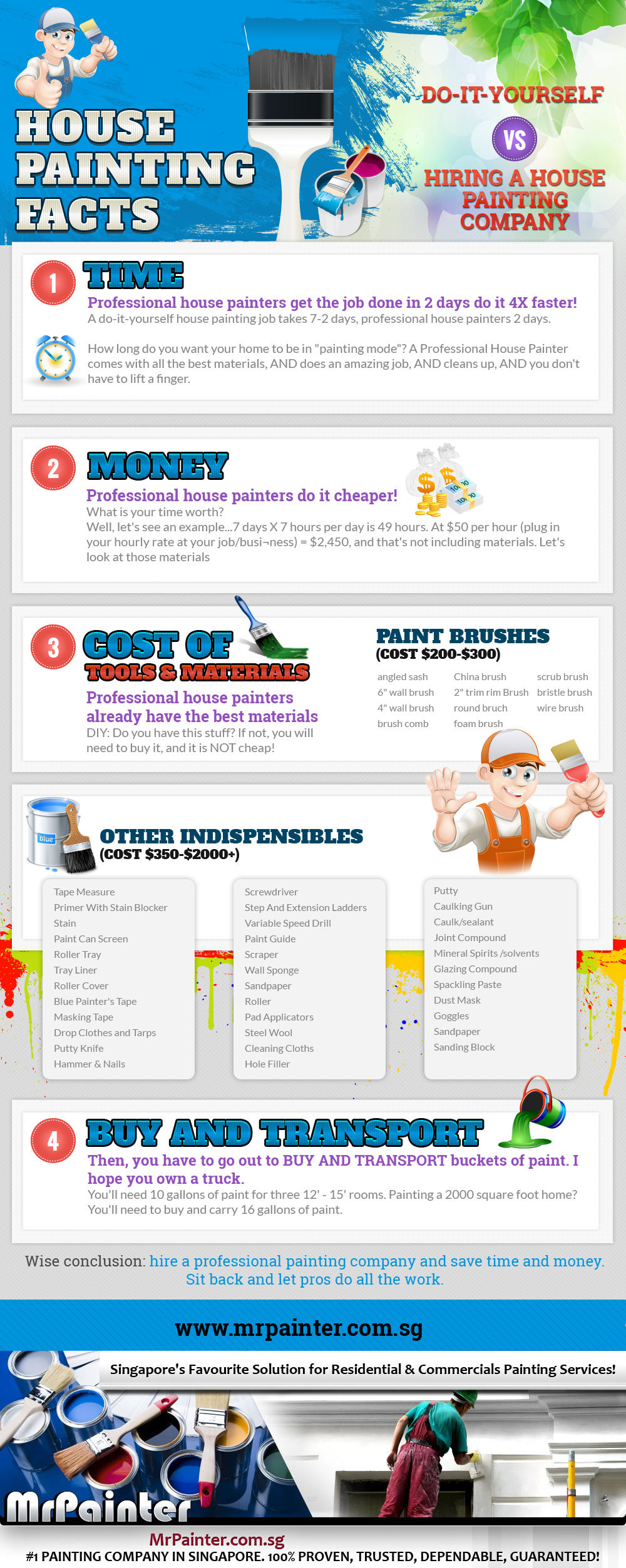Trick Seasonal Considerations For Commercial Outside Paint: What You Need To Be Enlightened About
Trick Seasonal Considerations For Commercial Outside Paint: What You Need To Be Enlightened About
Blog Article
Content Author-Leach Browne
When you're intending an industrial outside painting task, seasonal factors can make or damage your outcomes. You'll wish to take into consideration exactly how temperature and moisture effect paint application and drying out times. Selecting remodeling painter can guarantee your paint sticks appropriately and lasts much longer. However which seasons are truly the most effective for this sort of work? Allow's explore the crucial elements that can influence your project's success.
The Impact of Temperature Level on Paint Application
When you're planning an industrial outside paint project, the temperature can dramatically affect how well the paint sticks and dries.
Ideally, you intend to paint when temperature levels range between 50 ° F and 85 ° F. If it's also cold, the paint may not cure appropriately, leading to issues like peeling off or splitting.
On the other side, if it's too hot, the paint can dry too swiftly, protecting against appropriate adhesion and leading to an unequal coating.
https://www.communityadvocate.com/2021/08/26/phelps-painting-carpentry-offers-home-improvement-services-with-integrity/ ought to also think about the moment of day; early morning or late afternoon provides cooler temperatures, which can be a lot more favorable.
Constantly examine the maker's referrals for the particular paint you're utilizing, as they usually supply guidance on the optimal temperature variety for optimal results.
Humidity and Its Result on Drying Times
Temperature level isn't the only environmental element that influences your industrial exterior paint task; humidity plays a considerable function also. High humidity degrees can decrease drying times dramatically, affecting the total high quality of your paint work.
When the air is filled with dampness, the paint takes longer to treat, which can lead to concerns like poor bond and a greater risk of mold development. If you're painting on an especially moist day, be planned for extensive delay times between coats.
It's vital to check local climate condition and strategy accordingly. Preferably, go for moisture levels in between 40% and 70% for ideal drying out.
Keeping these factors in mind guarantees your task remains on track and delivers a long-term finish.
Best Seasons for Commercial Exterior Painting Projects
What's the very best season for your commercial exterior paint jobs?
Springtime and very early loss are normally your best choices. Throughout these seasons, temperatures are light, and humidity degrees are commonly lower, creating optimal problems for paint application and drying out.
Stay clear of summer's intense heat, which can create paint to dry also rapidly, leading to poor bond and surface. In a similar way, winter's cold temperatures can prevent proper drying out and treating, running the risk of the long life of your paint work.
Go for days with temperatures in between 50 ° F and 85 ° F for ideal outcomes. Bear in mind to inspect the regional weather prediction for rain, as damp conditions can wreck your project.
Planning around these elements ensures your painting task runs smoothly and lasts much longer.
Verdict
To conclude, intending your business exterior painting jobs around seasonal factors to consider can make a substantial distinction in the end result. By scheduling work during the ideal temperature levels and moisture degrees, you'll make sure better bond and drying out times. Bear in mind to watch on local weather report and select the correct time of year-- springtime and very early autumn are your best choices. Taking these actions will aid you attain a resilient and specialist finish that lasts.
